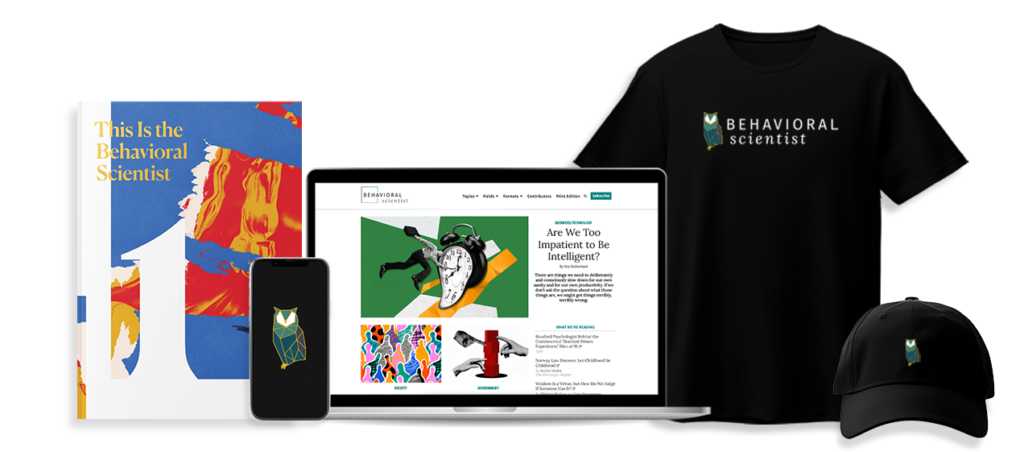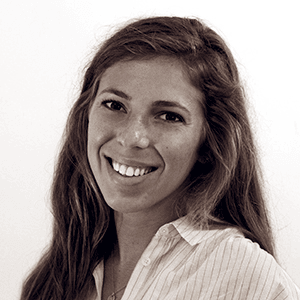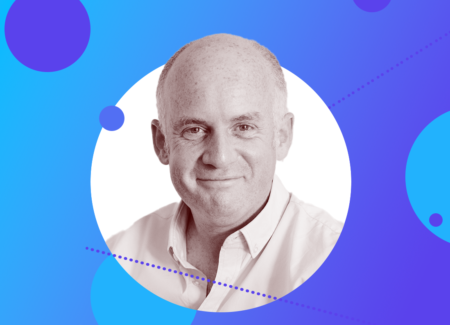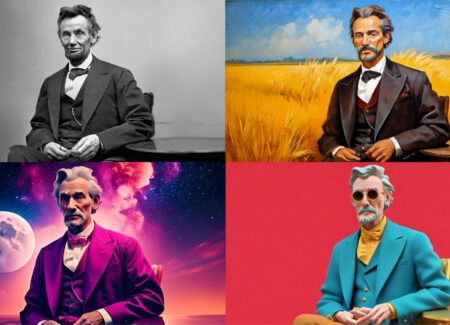When I asked Jane McGonigal about her approach to forecasting the future, she corrected me. “Future we usually say with an ‘s’—‘futures’—so we can keep an open mind to many different things. We’re not trying to predict a singular future. We’re trying to consider possibilities so we can shape it to be more like the future we want.”
McGonigal is both a game designer and futures forecaster. Over the past 15 years, she’s worked as the director of games research and development at the Institute for the Future, where she specializes in designing large-scale future simulations with thousands of people.
The transition from “future” to “possible futures” is key to understanding the nature of McGonigal’s work. McGonigal invents games that transport people into possible futures, and creates future forecasts based on players’ experiences. When people participate in a simulation designed by McGonigal and her team, the singular future—inevitable and unknown—opens up into a tangible and malleable world. “We’re trying to imagine the many risks we might face, disruptions we might live through, or transformations we might purposely create,” she told me. “We’re trying to hold all of the possibilities in our mind at the same time to evaluate, ‘Which of these futures do I want to help make?’”
McGonigal’s simulated futures have included pandemics, natural disasters, and unintended consequences of new technologies. In 2008, nearly ten thousand people worldwide participated in her six-week simulation of five global threats, including a global outbreak of a respiratory illness. At the time, McGonigal believed her most important findings were the instances when people would attend social events even at the risk of their health, which included church gatherings, weddings, and parties. But as the COVID-19 pandemic broke out in 2020, she found a different, more immediate benefit: a psychological one. People wrote her notes like, “I’m not freaking out, I already worked through the panic and anxiety when we imagined it ten years ago.”
“We’re imagining things that should be hard to think about. They should produce anxiety,” she explained. But as people leave McGonigal’s imagined worlds, she finds precisely the opposite. “People are so strangely optimistic coming out of these simulations. It’s what motivates me to keep going … There’s a psychological shift from feeling anxious or helpless to feeling ready, powerful, and helpful.”
McGonigal has just written her third book, Imaginable: How to See the Future Coming and Feel Ready for Anything—Even Things that Feel Impossible Today. I spoke with her about Imaginable; the possible futures she’s thinking about today, including a neurosensing social media platform and the injection of sulfate particles into the atmosphere; her creative process for designing simulations; and the tools she uses to collect and analyze people’s experiences in her imagined, alternate worlds.
This conversation has been edited for clarity and length.
Antonia Violante: I’m trying to place the practice of forecasting possible futures in a historical context. Did it emerge out of a particular discipline?
Jane McGonigal: The Institute for the Future is where I work and where I was trained as a futurist. It was founded in 1968, which was around the time that Alvin Toffler wrote the book Future Shock, which is considered by many to be the founding text of this field.
Why did future thinking emerge in the 1960s? That was a turbulent time, particularly in the United States. There was a lot of social change; a lot of activism and changing norms. The Civil Rights Act was being passed. You had gender equality, the sexual liberation of women, birth control pills. People were trying to keep up with the new technologies and new norms. A lot of futures thinking comes from this historical period of rapid change. People trying to feel like they could keep up, not be shocked, not be anxious, not feel powerless, but get more involved in shaping the future and feel ready for anything.
I think we’re seeing a huge uptick in interest in foresight work now—new degree programs, new journals, new public engagement. I think we’re probably living through a period at least as disruptive as the 1960s, if not more so. There’s a big psychological component in foresight work. We’re not trying to just predict the future so we can get an advantage or be successful in business, but really so that we can feel emotionally equipped to deal with change and disruption and find ways to thrive even in times of uncertainty.
A behavioral scientist runs experiments in the lab or field to generate insights. As someone doing foresight work, what is your “laboratory” like? What are the tools you use?
The tools that I use are scenarios and social simulations. A scenario is a quick description of a world we might wake up in. We usually look 10 years out because we’re trying to imagine significant disruption and people have more of an open mind. We find that people don’t want to think about big change happening now. But if you tell them, “Okay, we’re imagining 10 years from now,” there’s a sort of relaxation.
My real laboratory is the simulation, which is essentially a role playing exercise. But we try to recruit thousands or tens of thousands of people instead of a few people sitting around a table. We create a social, private social network online, where we treat the scenario as if it’s real and answer questions about how we would react to it.
I think the best way to describe it is like being on Twitter, Facebook, or Instagram, except everybody is posting about the same imagined scenario. Instead of posting a picture of your lunch or what you’re wearing today, your images and your words and stories are about future hypothetical events. We create the social fabric, this shared story. Even if we only run it for two or three days, we’ll often have many thousands of stories posted, photos posted, videos posted. It creates a very realistic texture of what the conversation would be. What are people asking for help with? What are they reporting as headlines or viral stories? It’s a collaborative, creative process.
Instead of posting a picture of your lunch or what you’re wearing today, your images and your words and stories are about future hypothetical events. We create the social fabric, this shared story … It creates a very realistic texture of what the conversation would be.
When we were simulating a pandemic in 2008 and 2010, we would ask questions like, “You’ve been told to quarantine for two weeks, under what circumstances would you break this order or not take this advice?” People would say things like, “Well, to go to church, because that’s really important to me,” or “I’d have to go to work because I can’t afford not to go to work unless the government’s going to pay me to stay home.” We asked people questions about what would you do? What would you need? What would you feel? We try to collect intelligence from the bottom up, so that we can anticipate.
Otherwise, it’s actually hard to predict social behaviors or social consequences. We had people in the simulations practice some pandemic behaviors, like wearing a mask. We had people act as if the pandemic were real, put on a mask, wear it on public transportation, wear to a party, wear it to work. What’s it like? How does it feel? What are the obstacles to you actually practicing this behavior? We were able to identify in our simulations just how significant the social friction aspects of mask wearing are. Also, if you don’t grow up practicing it, there’s a sensation of it being physically hard. [People] just weren’t used to the physical sensation of wearing a mask. Things that during the real COVID-19 pandemic were surprising to some experts in epidemiology or public health were not surprising to us based on what we observed in having people act as if they were living through a pandemic.
Going forward, we’re looking at different types of pandemics. What if it’s tick-borne instead of respiratory? We’re looking at things like climate migration. How much climate change are people willing to tolerate before they want to move? What are the obstacles to moving? How welcoming do people feel prepared to be to an influx of migrants who are climate refugees?
I’m really interested in your creative process for designing simulations. What do you start with? A research question? A problem?
It’s a fun thing to talk about. Because I specialize in risk and global challenges, I’m typically starting my process with what experts are projecting to be the biggest challenges that society will face in the coming decades. I do lean heavily on reports from public health professionals, epidemiologists, as well as people who work in geopolitics, ethics, responsible innovation, and unintended consequences of new technologies. Drawing on this broad range of experts, I will usually pick a risk or threat—like cryptocurrency collapse or tick-borne illness or unintended consequences of geoengineering—and try to translate it into a scenario using my game design background.
I have a practice of writing scenarios that’s a little bit different from other foresight practitioners, where I write it as if it were a script for a video game. You wake up and your phone is buzzing. It’s an emergency alert message from the national government. So you can picture in your mind very clearly that you’re facing some kind of challenge.
We also collect something called “signals of change,” which is the basic material of future forecasts and scenarios for all professionals. The signal change is something real that’s happening today; there’s a news story about it or it’s being documented on social media. You can look at it and say, “Here’s a real-world example of something changing, something new happening—a new behavior, a new practice, a new policy, a new risk or unintended harm.” I try to collect these to provide the texture for the scenario so the details are realistic and plausible.
Let’s say I’m imagining how we might face geoengineering decisions as a planet. If we are going to inject sulfate particles into the atmosphere there may be unintended consequences. How do we get informed consent from humanity? Who’s going to make this decision? Is it a company? A country? Is it a global decision? Will ordinary people trust the science? What conspiracy theories might come out of it? And then I just look for information. Are there any conspiracy theories about geoengineering currently that might turn into the next QAnon or “Bill Gates is injecting microchips into the vaccine”?
You’re trying to bring realism, plausibility, and depth to these scenarios by digging deeper into what we are already seeing as evidence of change, and imagining if it continued for the next 10 years, or could happen at scale of not just 10 people but 10 million, or a billion, and trying to make inferences based on that.
When you do a simulation, you collect so much information. How do you make sense of your data?
We survey participants to collect data that can be analyzed. When we’re looking at climate migration, there’s a 10-question survey that we use to ask participants about their intention to migrate and what they perceive as the most personally salient risks. Is it wildfire risk and smoke air quality? Is it power structure instability? Then, we survey people after they’ve spent more time in this scenario to see if after having thought more deeply in their imagination they would change that.
We can do sentiment analysis. We’ve looked for positive and negative emotion in what people are writing and sharing. For a pandemic, obviously, there’s going to be negative sentiment. But if we’re running scenario about a new neurosensing technology that would allow the next big social network to broadcast unfiltered feelings or biological data or even thoughts—which sounds crazy but social software companies are working on this technology—we can find out if young people are generally excited about the idea of having unfiltered authentic, self-shared feelings or if they feel more trepidation. Does this seem like Black Mirror, dystopian or utopian? That’s something we can analyze.
People are creating documentation of what they would do or what they would feel or think. We study them as if they are real people already doing the things they imagine. What are the patterns in what they’re saying? What do they seem to be most excited about or most worried about? Interviewing players in depth about things that they’ve created or shared to find out what’s the motivation, what’s their reasoning. We might have a group of 10 or 20 researchers looking at the material, coming in for these deeper patterns, and then following up with participants to understand them better.
What has it been like trying to share insights you’ve learned from your work with government organizations or in a corporate context?
I’ve been doing this work since 2007. My first major projects were all public facing, meaning they were not developed for an organization or government department. It was an effort to engage the public about futures thinking and to increase public awareness of risks and threats and see what we could learn from ordinary people simulating it rather than experts.
In the middle of my career, I did get hired by government organizations and technology companies who do this kind of work. I personally have decided I prefer the public facing work, because I don’t know that there is a capacity to change policy or really inform decision-making from this kind of work yet. Whether a company is really thinking about short term profits or governments, it’s hard to take action on future issues that people aren’t acting on or asking for action yet. The government doesn’t want to spend money to prepare for a potential tick-borne pandemic that might not be realized for 10 years. They’re trying to keep people happy now.
The main question that I ask people is, “How could you be of help in the future?” … It’s pre-imagining being of service, which builds confidence. There’s a psychological shift from feeling anxious or helpless to feeling ready, powerful, and helpful.
I’m working as a researcher for the institute on what we think is important as an independent nonprofit research organization and communicating that directly to the public. I’m not currently developing any scenarios specifically for technology companies or government organizations. I’m working in service of the public imagination. It feels more like an independent, intellectual activity.
What’s your pitch for why someone should participate in a simulation? What’s in it for them?
People are so strangely optimistic coming out of these simulations. It’s what motivates me to keep going. We’re imagining things that should be hard to think about. They should produce anxiety. But when people are given the chance to experience them in a psychologically safe way, to think about things that we probably will need to live through, you get more of the creativity and the optimism that comes from having that 10 year runway. The main question that I ask people is, “How could you be of help in the future? Who might need help, and how would you try to serve them?” It’s pre-imagining being of service, which builds confidence. There’s a psychological shift from feeling anxious or helpless to feeling ready, powerful, and helpful.







